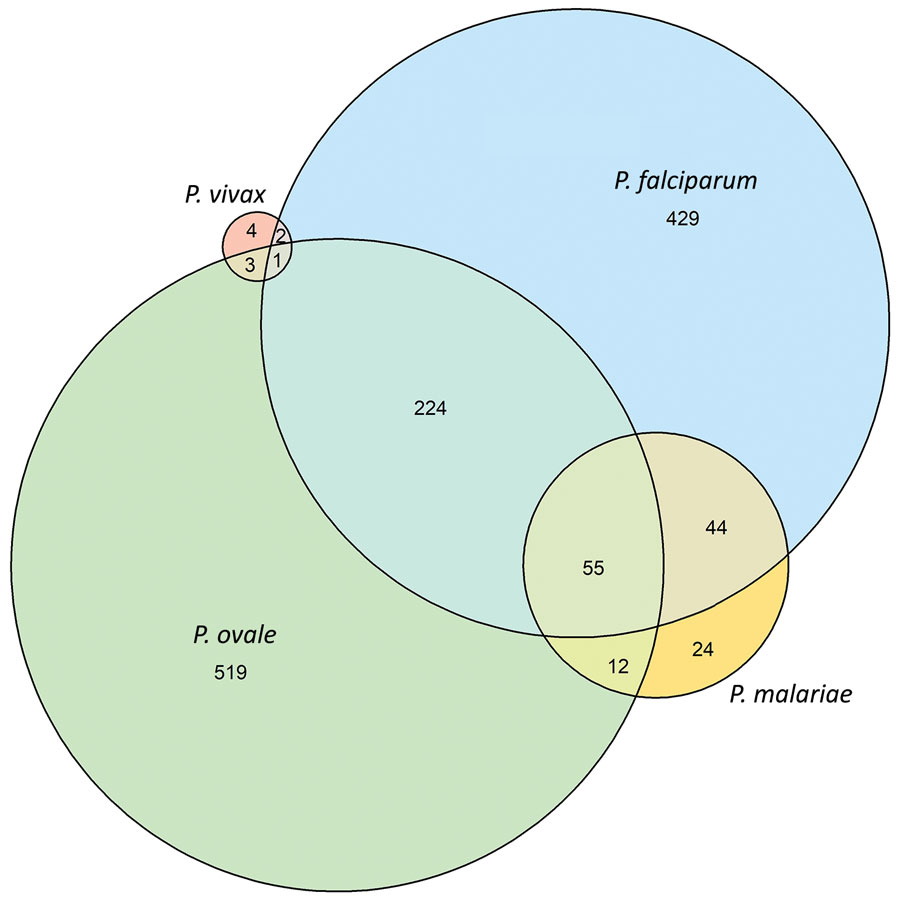Volume 29, Number 6—June 2023
Research
Similar Prevalence of Plasmodium falciparum and Non–P. falciparum Malaria Infections among Schoolchildren, Tanzania1
Figure 1

Figure 1. Distribution of Plasmodium spp. infections among schoolchildren, Tanzania. Prevalence estimates according to species: P. falciparum, 21.8% (95% CI 20.5%–23.3%, n = 755); P. ovale, 23.6% (95% CI 22.2%–25.0%, n = 814); P. malariae, 3.9% (95% CI 3.3%–4.6%, n = 136); P. vivax: 0.3% (95% CI 0.2%–0.6%, n = 11). P. vivax + P. malariae co-infection (n = 1) is not shown.
1Data from this study were presented as a virtual poster at the American Society of Tropical Medicine and Hygiene conference, November 17–21, 2021.
2These first authors contributed equally to this article.
3These senior authors contributed equally to this article.
Page created: March 13, 2023
Page updated: May 17, 2023
Page reviewed: May 17, 2023
The conclusions, findings, and opinions expressed by authors contributing to this journal do not necessarily reflect the official position of the U.S. Department of Health and Human Services, the Public Health Service, the Centers for Disease Control and Prevention, or the authors' affiliated institutions. Use of trade names is for identification only and does not imply endorsement by any of the groups named above.